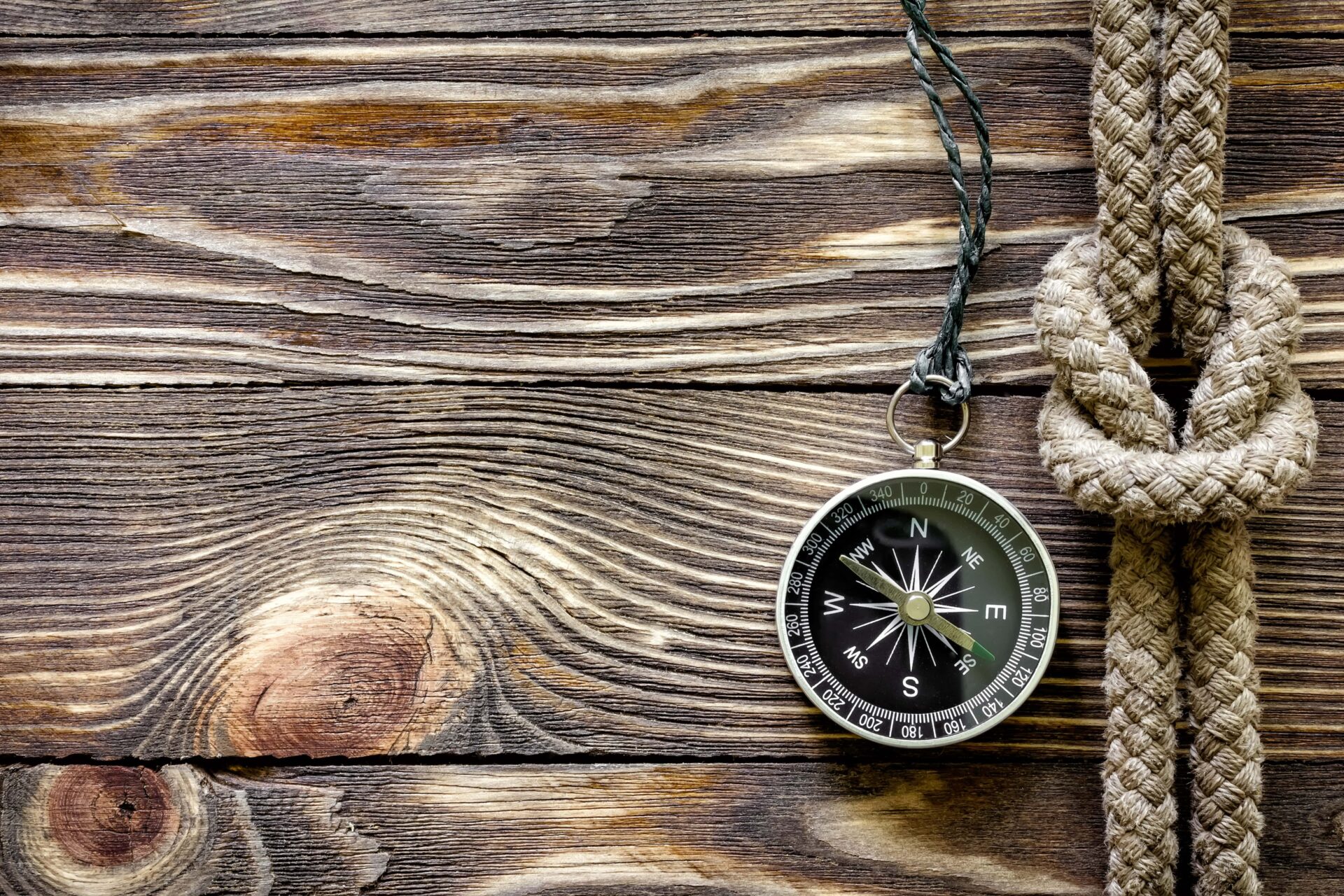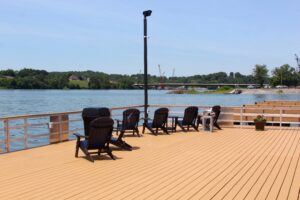When it comes to woodworking, medium-density overlay (MDO) lumber is often enough for the job. As a result, contractors use this all-purpose building material in many different applications. But when it comes to marine environments, think again.
You’ll need to invest in marine-grade lumber for docks and other marine uses, like seawalls and water walkways. But what makes lumber marine-grade, and why is that so important?
What Is Marine-Grade Lumber?
Marine-grade lumber is wood you can use for water applications, both near or in the water. The wood goes through a unique treatment process to make it acceptable for use in various marine environments. There are specific types of wood for saltwater applications and others for freshwater applications.
Is Marine Grade Wood Waterproof?
No, marine-grade wood is not completely waterproof. However, it is highly water-resistant due to its treatment process, making it suitable for use in wet environments without warping or rotting.
Need high-quality marine-grade lumber for your next project?
Explore our selection of premium marine-grade wood tailored for docks, seawalls, and more. Contact Haven Dock & Marine for your durable marine grade lumber!
Now that you understand what marine-grade lumber is, let’s explore how it compares to pressure-treated lumber and why it’s essential to know the difference when choosing the right materials for your projects.
What is the Difference Between Pressure-Treated Lumber and Marine Lumber?
Although both types of lumber undergo treatment processes, marine-grade lumber is specifically made for marine environments, while pressure-treated lumber is treated to resist rot, mold, and pests. Now, let’s break down the differences between natural marine timbers and pressure-treated wood.
Natural Marine Timbers
Most docks use marine lumber because not just any wood will do for piles. Being constantly submerged in water means piles require either treated softwood or hardwood.
Treated softwood is affordable and customizable, making it popular. However, it can still be vulnerable to decay and marine pests. Some common softwoods include:
- Cedar
- Douglas fir
- Pine
- Redwood
On the other hand, hardwoods, like Greenheart, are naturally strong and have protection against water corrosion and rot. Therefore, they don’t require pressure treatment.
Marine-Grade Pressure Treatment for Lumber
Pressure treatment describes the process of fortifying natural lumber against mold, rot, and pests. A unique chemical treatment penetrates deep into the wood fibers. The most common chemical in the treatment is copper.
There are many types of pressure treatments, creating wood that you can use for various applications.
How Long Does Marine-Grade Lumber Last?
Experts say high-quality marine-grade lumber can last up to 30 years or more with proper maintenance.
Using EPA-approved wood preservatives and sealants can make your lumber last even longer. When looking at the lumber label, pay attention to the type of preservative on the treated wood. Different preservatives work best for various applications. The most common treatments are:
- Alkaline copper quaternary (ACQ)
- Chromated copper arsenate (CCA)
- Micronized copper azole (MCA) and copper azole (CA)
The APWA Classification System
The American Wood Protection Association (APWA) sets the standards for treated wood in residential and commercial applications. Although APWA standards are only informational, many building code laws reference them at the federal, state, and local levels. Thus, it’s imperative to understand the classification system when purchasing lumber for your project.
For example, if you’re undertaking a marine construction project, you only want to use a classification of UC4A or greater. This classification proves the wood is water-resistant.
Conversely, those working specifically in saltwater should look for the UC5B and UC5C classifications. While you may use UC4B for a freshwater boardwalk, you’ll need something with more durability for saltwater deck boards.
Remember that saltwater environments also require stainless (not galvanized) steel for the fasteners.
By understanding the standards listed here, you’ll have a much better idea of the type of wood to use for your project.
UC4A
Contractors typically use UC4A in the following applications:
- Crossties
- Decking
- Fencing
- Guardrail posts
- Utility posts in low-decay areas
The wood will withstand exposure to regular weather cycles but can succumb to decay, fungi, and insects with time.
The service conditions are:
- Freshwater
- Ground contact
- Non-critical components
UC4B
Common uses for UC4B wood are as follows:
- Building poles
- Crossties
- Horticulture posts
- Permanent foundations
- Utility poles
Like UC4A, UC4B wood can withstand exposure to regular weather cycles but can also resist high decay. This includes splashes of saltwater (not submerged). However, the wood can still experience decay, fungi, and insects with an increased potential for biodeterioration.
The service conditions are:
- Freshwater
- Ground contact
- Critical components or difficult replacement areas
UC4C
UC4C is standard for the following applications:
- Crossties
- Foundation piling
- Land piling
- Water piling
- Utility poles in high-decay areas
Unlike the other UC4 classifications, UC4C can withstand severe environments, including those with extreme decay potential. However, that increases its likelihood of biodeterioration.
The service conditions are:
- Freshwater
- Ground contact
- Critical structural components
UC5B
UC5B describes wood for these saltwater applications:
- Bracing
- Bulkheads
- Piling
It’s the ideal classification for continuous marine exposure. But, it may succumb to saltwater organisms, such as Limnoria Tripunctata.
Thus, UC5B is best for salt or brackish water on the east coast from New Jersey to Georgia.
UC5C
UC5C has the same applications as UC5B but is best for salt or brackish water on the east coast, south of Georgia, and along the Gulf.
It, too, has the potential to deteriorate from saltwater organisms like Martesia and Sphaeroma.
How Do You Choose the Right Marine-Grade Lumber?
To guarantee you choose suitable lumber for your project, consider the following questions:
- What kind of water is in the construction environment?
- What’s the weather like? Are there frequent hurricanes?
- Does the water freeze in winter?
- How much boat traffic is there?
- Is the project residential or commercial?
By further understanding the conditions of your project, you will know which marine lumber to choose using the APWA classification system. When in doubt, ask our professionals for advice.
Get the Right Lumber for Your Marine Projects!
When it comes to marine environments, don’t compromise on quality. At Harbor Exports, we offer a wide selection of marine-grade lumber that meets the highest standards for durability and performance. Whether you’re building docks, seawalls, or water walkways, our experts are here to guide you in choosing the perfect materials for your needs.
Explore our extensive range of marine lumber products, or contact us today to discuss your project and ensure you have the best supplies for lasting results!
- About the Author
- Recent Posts
Brad Enfinger has been in construction for over 20 years and has been involved with every material from concrete slab to laying the roof on houses. Brad’s diverse experience has given him the knowledge needed to assist those with shipping building materials, whether it be a house, pole barn, deck, or a dock. Brad at Harbor Exports has anything for your building material needs and can export material all over the world.




